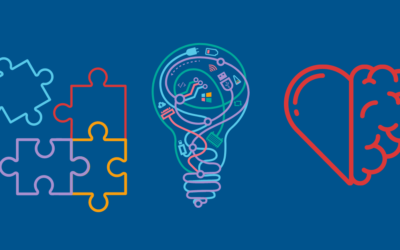Hard-to-work-with, passive-aggressive, disagreeable, arrogant, unresponsive, unmotivated, angry. Know anyone like that?
Rational, levelheaded, thoughtful, curious, respectful, friendly, easy-to-get-along-with, agreeable. You probably know people like this, too.

Whether negative or positive, we throw labels onto people until they stick. Those labels are a product of our judgement and are heavily influenced by our biases and filters. Without awareness of the potential for bias, you can under or over-estimate a person’s skills, discount their input, fail to take advantage of their knowledge or only hear ideas from those with whom you agree. All of this artificially narrows your viewpoint, restricts options and skews your decisions. On the other hand, an insightful leader knows to recognize his own biases and intentionally see beyond them. She knows to challenge her own limited viewpoints to intentionally gather the information that differs from her own opinion…and then listen to it.
For example, when I ran a research program for the federal government, we created active research programs of which I was proud. And then, we got a new boss. Within a few short discussions with him, I labeled him, “arrogant, difficult, and a jerk.” I’m sure he labeled me something like, “bureaucratic, wimpy, and weak.” Because I labeled him as “difficult,” I avoided talking to him, asking his opinion or working with him, as much as possible. He didn’t relish working with me either. In our meetings, he became frustrated and yelled his orders. My bias was so strong that projects he started, I discontinued when he left. Similarly, he disliked our programs and tried to stop the ongoing work. Sadly, neither he nor I could see beyond our biases to the value we each offered. The result – bad decision-making. He couldn’t the value in our projects and I couldn’t accept his good ideas (and he had good ideas). The big loser was the program of research that would have been stronger if we saw past our biases. To keep this from happening to you, you must first realize that, from a neuroscience perspective, the deck is stacked against you. You are designed to gravitate and believe those people you like.
You see, your brain takes shortcuts to make things easy for it. Those shortcuts create natural biases. It’s easier for your brain to talk to people for whom you feel a connection. Maybe they think like you, have a similar background, or you have something in common. Similarly, it’s easier for your brain to avoid those for whom you do not have an affinity. Perhaps they have different ideas, work processes, values or backgrounds. Another brain shortcut is to unconsciously hear and give more credence to information that supports your existing viewpoint. When presented with a wide range of information, your brain will naturally gravitate to the information that is most like your existing perspective. Basically, it’s easy to see a situation as you always have but you must work harder to force your brain to be flexible to new ideas coming from different people.
You simply can’t afford to let your biases be in control of your decision-making and skew your perceptions. Here are five steps to challenge your existing impressions so that you create insightful decisions.
- Recognize the labels you’ve created. Recognize the labels that you have imposed onto others and that may hold back your receptivity to some people and overly rely on other people.
- What impressions have you formed about the people you work with?
- Who are your “good guys” and who are the “bad guys?”
- Challenge those impressions. Notice your natural preference for some and not others. Now, do the hard work of challenging your own impressions so that you create more balanced input.
- Are you talking only to people with whom you’re comfortable?
- Are you asking for input from those most likely to agree with you?
- Are you avoiding those who rub you the wrong way?
- Are you discounting (or not asking) opinions from those for whom you find tedious, annoying or difficult?
- Question your experience. Your brain easily gravitates to answers based on your experience. But, in a changing world, the past may not be prologue. Past experience may be of limited value.
- Does the future resemble the past?
- Do the old answers pertain to new questions?
- Your experience may provide valuable input but are you sure?
- Are you over-relying on experience from the past when the past may not be a reliable predictor of the future?
- Broaden your input. To change the impact of bias in your decision-making, intentionally identify a broad range of people from whom to seek input. Balance input from those likely to share your views with those likely to have a contrarian perspective. Talk to a range of people who are different from you. I once interviewed the head of the engineering department for a major university who was also a former astronaut. He explained that when faced with a difficult decision, he intentionally sought the opinions of women peers. Because, he noted, they approach problem-solving differently. He felt that he benefited from their shift in perspective. You can do the same if you intentionally challenge your biases.
- Are you talking to a wide range of people including those with whom you easily relate and those you don’t?
- Is the input you receive balanced between expected and surprising?
- Truly listen. Even when you make an effort to talk to a wide range of people, the natural inclination of your brain is to hear, remember and give more validity to opinions, facts and data that support your existing It takes more effort for your brain to internalize different perspectives.
- Are you only hearing the input that supports your viewpoint?
- Are you discounting the information that is contrary to your current beliefs?
- Are you spending the extra time and energy to really listen and absorb other ideas?
How can you be more insightful about the impacts of your biases? What steps will you take to accommodate for your biases so that you make more robust decisions? Try these five steps to overcome your natural biases. You’ll take full advantage of many perspectives so that your viewpoint broads and you make more insightful decisions.
Share your stories about how you challenge your impressions and overcome biases with Shelley here.





0 Comments